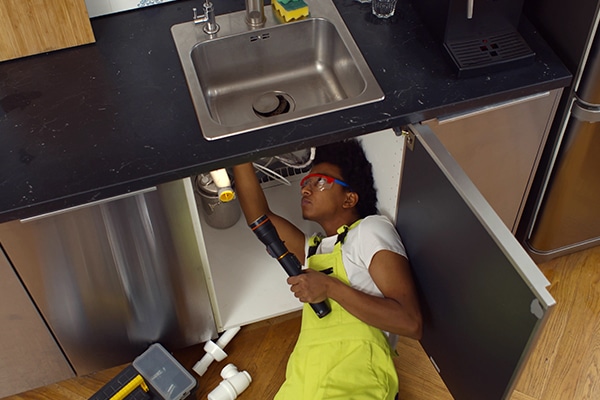Trusted Plumber Alabaster AL for All Your Emergency situation Demands
Trusted Plumber Alabaster AL for All Your Emergency situation Demands
Blog Article
A Step-by-Step Guide to Reliable Hot Water Heater Installation for Ideal Performance
Beginning on the task of setting up a water heating unit is an endeavor that demands accuracy and a methodical approach for achieving optimal efficiency. As you proceed, the details of linking water supply lines and setting up trusted electrical or gas connections wait for, appealing understandings right into making certain effectiveness and dependability.
Picking the Right Water Heater

Following, consider the size and capacity of the hot water heater. It's vital to analyze your house's warm water demands, which can vary based on the number of residents and their usage patterns. A device that's as well small may bring about not enough warm water, while an oversized design might cause unnecessary energy intake.
Effectiveness ratings additionally play a critical duty in choice. Look for hot water heater with high Power Element (EF) scores, indicating superior efficiency and lowered energy usage. Tankless models, though usually extra expensive upfront, deal considerable power savings gradually due to their on-demand home heating capabilities.
Preparing the Setup Location
Prior to installing a brand-new water heater, careful preparation of the setup location is crucial. It's essential to measure the area thoroughly to accommodate the water heating unit's measurements, guaranteeing sufficient clearance around the device for reliable operation and maintenance.
Examine the flooring for stability, as the water heater will need a strong, degree surface area to operate properly. If necessary, set up a drip pan beneath the system to capture possible leaks or spills, stopping water damage to the surrounding area.
In addition, guarantee that all necessary tools and products get on hand before commencing the setup. This consists of items such as wrenches, screwdrivers, a level, and any additional equipment required for mounting and protecting the heating system. A well-prepared installation area establishes the foundation for an effective hot water heater configuration, maximizing efficiency and security.
Connecting Water Lines
When linking water supply lines to your recently installed hot water heater, it is essential to guarantee that all links are secure and leak-free to preserve reliable operation and protect against water damages. Begin by determining the chilly and warm supply of water lines. The chilly water inlet is commonly marked with a blue label or a "C", while the hot water electrical outlet is marked with a red label or an "H".
Usage adaptable water heater ports to promote a much easier installation process. Prior to attaching the adapters, place a plumbing technician's tape around the threaded ends of the water heating unit's inlet and electrical outlet pipelines.
Once connections remain in place, gradually turn on the major water system valve. Inspect each connection for leakages by visually examining and really feeling for dampness. Tighten up links as needed, and ensure the stress safety valve is properly mounted, securing versus too much stress accumulation.
Establishing Electric or Gas Links
Properly establishing up the electrical or gas links for your water heating unit is an essential action to ensure risk-free and reliable procedure. For electrical water heating units, begin by confirming that the electrical circuit is compatible with the heating unit's voltage and amperage needs.
For gas water heating units, safety and security is paramount. Link the gas line to the water heating unit making use of a versatile gas adapter, guaranteeing it is properly threaded and sealed with pipeline joint substance or Teflon tape ideal for gas links.
Once links are made, evaluate for any type of possible leakages. For gas lines, apply a soapy water option to the joints; bubbles indicate a leak. next For electric links, verify that all electrical wiring is safe and secure and effectively shielded, maintaining compliance with local electric codes.
Changing and checking for Performance
With the electric and gas connections firmly in location, the next action is examining the functional effectiveness of your water heating system. Begin by meticulously transforming on the water supply and guaranteeing there are no leakages at any of the joints or shutoffs.
Following, do a detailed inspection to make certain the burner or gas burners are functioning correctly. For electric heaters, make use of a multimeter to confirm if the aspects are attracting the ideal existing. In gas versions, observe the burner flame; it must be blue and constant, suggesting efficient combustion.
Change the setups as required to get rid of ineffectiveness. Consider carrying out insulation measures, such as adding you can try these out a hot water heater blanket, to even more boost efficiency by minimizing warm loss. In addition, inspect the anode rod's condition, as a deteriorated rod can reduce effectiveness and result in container corrosion.
Final Thought
Effective hot water heater installation is crucial for making sure optimum efficiency and energy financial savings. By choosing the appropriate kind and dimension, and thoroughly preparing the installment location, a foundation for success is developed. Firmly attaching water system lines and meticulously setting up electric or gas links minimize potential problems. Complete testing for leaks and exact this article thermostat changes to 120 ° F improve dependability and efficiency. Abiding by these actions promotes long-term functionality and power preservation in property water heater.

Properly setting up the electric or gas links for your water heating system is a critical action to make certain risk-free and reliable operation. For electrical water heating systems, begin by confirming that the electrical circuit is suitable with the heating unit's voltage and amperage requirements. Connect the gas line to the water heater making use of a flexible gas adapter, ensuring it is effectively threaded and secured with pipeline joint substance or Teflon tape suitable for gas connections.
Report this page